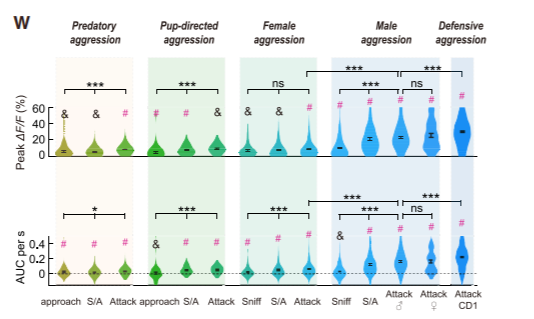ZJU scientists unravel the mystery of anger and aggression
2021-04-22 |Global Communications
When we are provoked or threatened, anger often arises and it is even accompanied by certain aggressive behaviors. In the biological chain, stalking and hunting are quite common in the natural world. Aggression is a core strategy in the law of survival of the fittest. Most animals have evolved specific neural circuits to regulate aggressive behavior. Then how do brain circuits manage anger and govern aggression?
The armed forces in the brain
The research team led by academician DUAN Shumin and Prof. YU Yanqin in the Zhejiang University School of Brain Science and Brain Medicine recently published an open-access article entitled “A Substantia Innominata-midbrain Circuit Controls a General Aggressive Response” in the journal Neuron. Their research reveals that posterior substantia innominata (pSI) neurons respond to several aggression-provoking cues with the graded activity of differential dynamics, thus unraveling the mystery of “anger and aggression”.

The substantia innominata (SI) runs longitudinally through the anterior and posterior brain regions, but the posterior SI (pSI), also classified as the extended amygdala, has been long overlooked. In mice, SI has a larger volume than the lateral hypothalamus and a greater number of cells than the central amygdala. By recording cellular activity in SI, researchers found that when two mice fought with each other, their SI would become active as if they were mobilizing and deploying “the armed forces in the brain,” and even sounding a “call to arms” before the fight, signaling that an aggressive act would ensue.

Probability of light-induced aggression in 13 aggression paradigms
The researchers used an ontogenetic approach to activate specific cells in pSI. For example, after activation of the midbrain central gray responsible for aggression, the manipulated mouse would instantly switch from a “calm state” to a “fighting state”, ready for attack.
After optogenetic activation of pSI, mice would also exhibit physiological changes related to anger, such as bulging eyes, accelerated breathing, increased heart rates and trembling. In as many as 13 different situations, those optogenetically activated mice would attack their opponents in the light-evoked “battle mode”.
Unveiling the mystery of “anger”
From a physiological perspective, provocation can arouse anger and even induce violence in humans. Researchers found that it was also true of mice. A multitude of intimidating stimuli would increase the likelihood of aggression. The stronger the stimulus, the more aggressive they would become. By recording Ca2+ signaling, researchers discovered that pSI encoded threat stimuli of different intensities, which, together with the correlation between threat and anger, suggested that we may be able to perceive the degree of “anger” from the level of excitation in pSI.

Peak DF/F (top) and AUC/s (bottom) of GCaMP6m signals during diverse aggressive behaviors
In experiments, researchers found that when the cells in pSI were optogenetically suppressed, the irritable and aggressive mice would become mild and genial immediately while behaving normally in other social activities. How to control untimely aggression will be the next item on the agenda for the research team.







